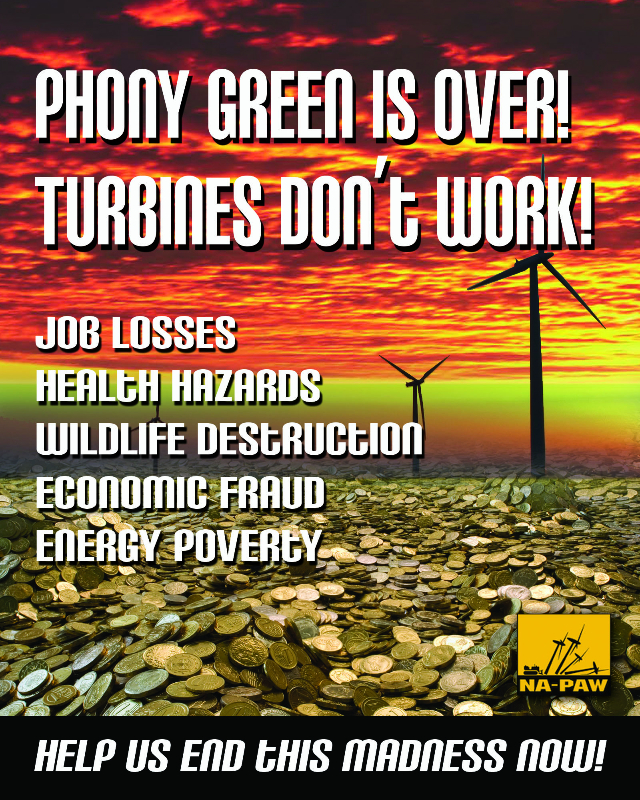It took a little under a decade, but the message is finally getting out: THESE THINGS DON’T WORK – on any level.
There are 3 electricity essentials – that the power source and its delivery to homes and businesses be: 1) reliable; 2) secure; and 3) affordable.
Try to skimp on any one or more of those essential elements and you’re no longer talking about an energy ‘system’, you’re condemning your economy to social and economic ‘chaos’.
Reliability and security mean that power is delivered precisely when and where it’s needed; without exception – satisfying those critical requirements means the supplier doesn’t get off the hook by glibly claiming the wind didn’t blow, the Sun didn’t shine, or the dog ate my homework.
As to affordability, you can have the most reliable and secure system on Earth, but if the cost of what’s to be delivered is beyond the reach of households; or puts power hungry businesses to the wall, then reliability and security become irrelevant: suppliers without customers don’t last for very long, before they too are out of business.
Passing the ‘reliability’ ruler over wind power draws an obvious blank; so too with the idea that a wholly weather dependent power source could, somehow, earn the tag ‘secure’.
Then, on the totally unpredictable occasions when some of its capacity might become available, the cost to Australian retailers sits at over $110 per MWh (AGL, in its capacity as retailer, locked in a fixed price for all of the wind power produced by its suppliers at $112 per MWh, for which it collects a REC as part of the bargain, currently worth $72). That figure (the whole of which is added to retail power bills) compares with an average wholesale price of $35-40 per MWh.
In South Australia – Australia’s ‘wind power capital’, futures contracts on the ASX Energy market for electricity delivered in 2016-18 are between $86 and $90 a MWh. That compares to between just $37 and $41 MWh in Victoria and between $43 and $48 per MWh in NSW. Both NSW and Victoria draw the vast bulk of their power from coal-fired plant. And South Australia draws heavily on Victoria’s and NSW’s coal-fired plant via the Heywood and Murraylink interconnectors. Heywood has a notional capacity of 460MW and Murrylink a notional capacity of 220MW. A recent wind power collapse in SA overloaded the interconnectors, which shut down to avoid a thermal melt-down, and resulted in an almost State-wide blackout (see our post here).
Australia’s Large-Scale RET will add a further $45 billion to retail power bills in wind power subsidies and/or retailer fines between now and 2031 – all designed to be directed to wind power outfits (see our post here).
Already, tens of thousands of Australian households can no longer afford power (see our post here).
In SA, the number of permanently disconnected homes exceeds 50,000 (see our post here).
And one of its biggest employers, Port Pirie’s Nyrstar Smelter is considering its future, due to the phenomenal cost of wind power and the insane cost of running banks of highly inefficient Open Cycle Gas Turbines to cover wind power output collapses: when the wind drops out, on a totally unpredictable basis, the spot price rockets from around $50-70 per MWh (on average) to over $2,000 and often hits the regulated cap of $13,800 per MWh – all borne by power consumers, of course (see our post here).
Nystrar’s completely justified complaint about South Australia’s energy debacle is directed at all 3 of the fundamentals – thanks to its 17 wind farms and the haphazard delivery of any fraction of their notional capacity of 1,477MW – SA’s power supply is no longer reliable, secure or affordable.





